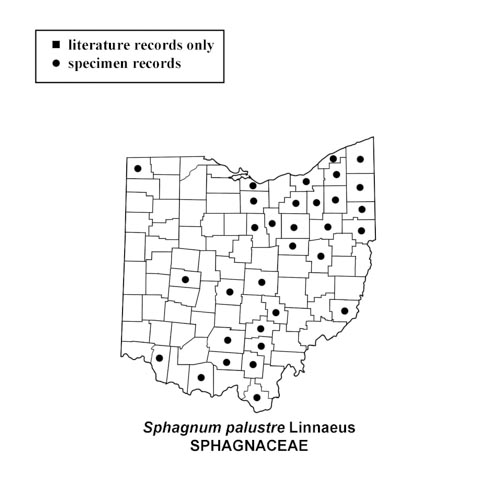Sphagnum palustre
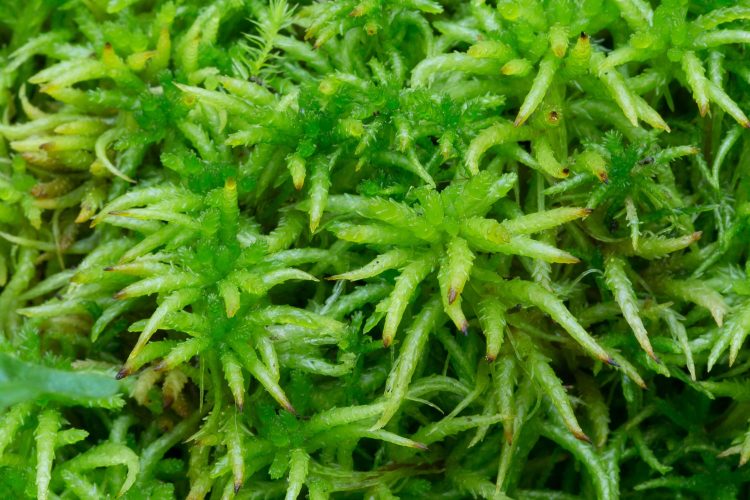
Sphagnum palustre at Browns Lake Bog, Wayne County, Ohio. June 11, 2016.
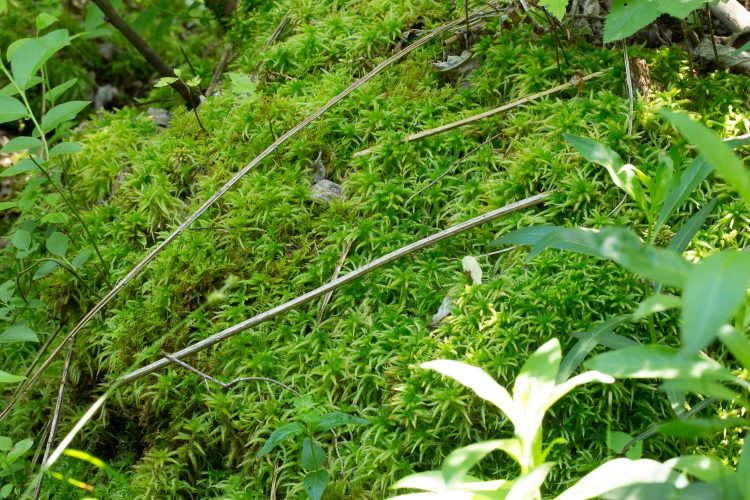
Mound of Sphagnum palustre at Browns Lake Bog, Wayne County, Ohio. June 11, 2016.
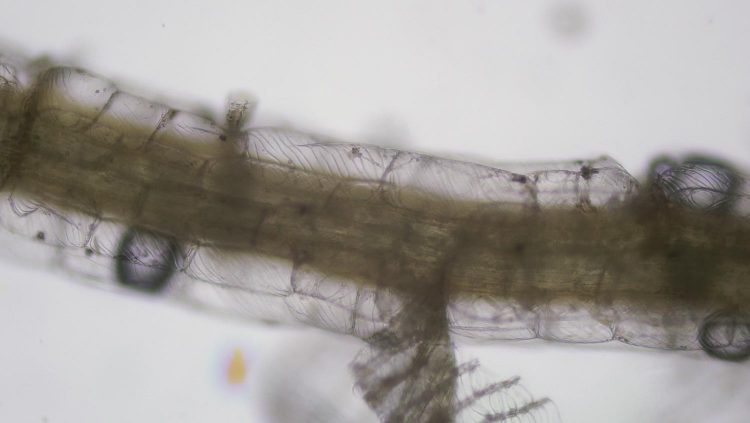
Branch of Sphagnum palustre. Notice fibrils in cortical cells.
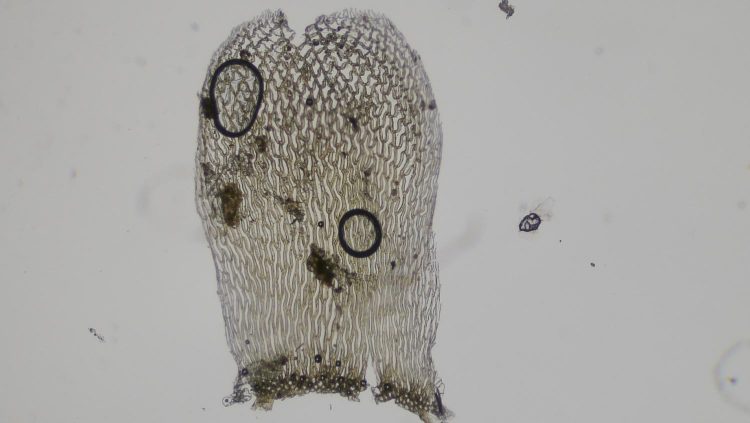
Long ligulate (strap-shaped) stem leaf of Sphagnum palustre.
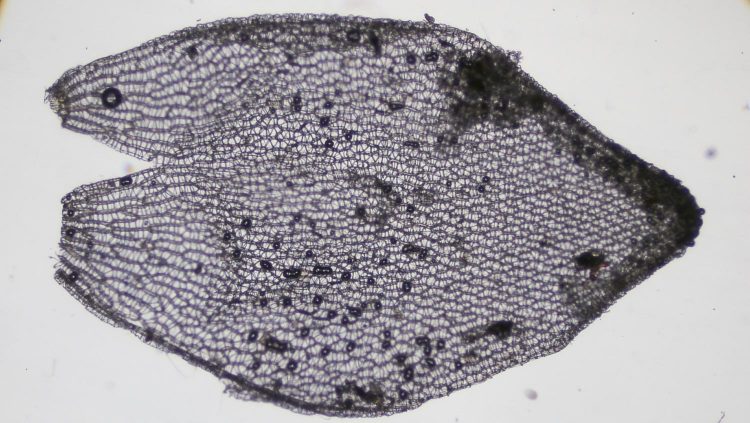
Branch leaf of Sphagnum palustre.
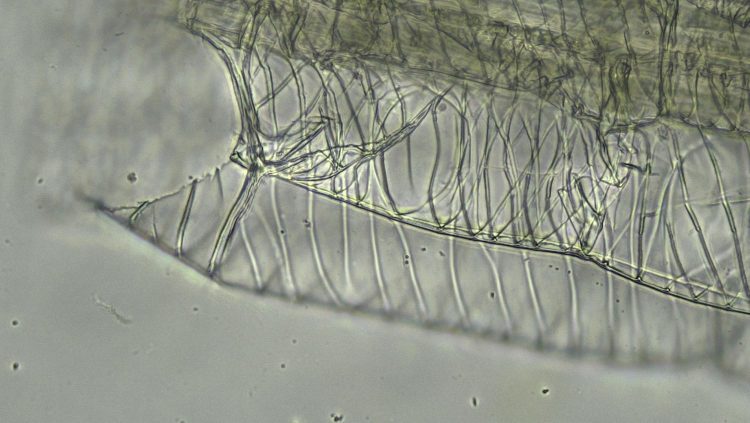
Cortical branch cell of Sphagnum palustre.
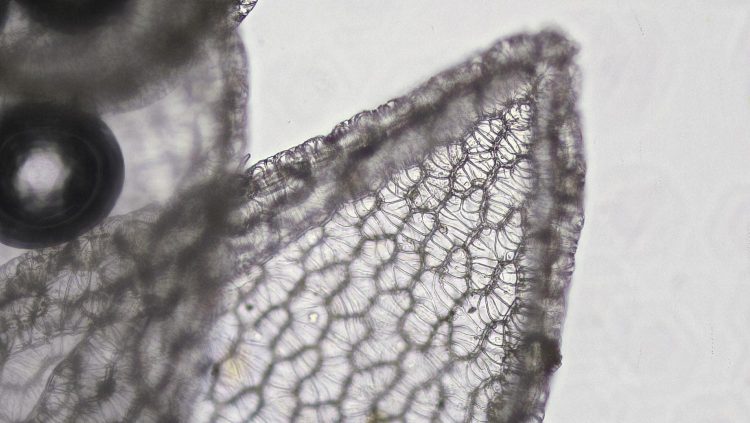
Tip of branch leaf of Sphagnum palustre.

Cells of stem leaf of Sphagnum palustre; fibrils and most of hyaline cell membranes resorbed.
How to recognize Sphagnum palustre: This Sphagnum is a large robust plant with cucullate (leaf tips hood-shaped) branch leaves and a member of section Sphagnum in the genus. This section has fibril-reinforced cortical cells in the stem and branches; the outer cell on the edge of the branch leaf has a little resorption furrow which can be seen in a cross-section of the leaf, along with the triangular to trapezoidal green leaf cells exposed on the inner concave leaf surface and smooth adjacent hyaline cell walls. There are 4-5 branches in each fascicle with two branches spreading. The stem leaf is large with a rounded tip with fine fringe on the edge and sides, and the hyaline cells are not divided. Most of the leaves do not have the obvious tear in the leaf apex seen in the picture above. The woody stem wood cylinder is brown with 3 to 4 layers of cortical cells. S. palustre is very similar to Sphagnum papillosum which has papillae on the inside of the hyaline cells adjacent to the green cells in the branch leaves, and divided stem leaf cells.
Where to find Sphagnum palustre: This moss is found in wetlands, pool and lake margins, wooded swamps, bogs and poor fens. A poor fen is not acid enough to be a bog and does have water flowing into it from streams or springs.
